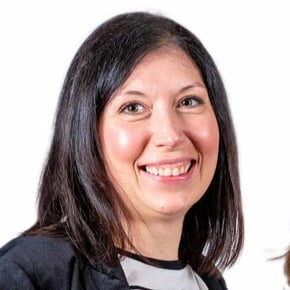“What Position Do I Play In, Again?”
Most piano teachers have heard this infamous question at some point in their teaching careers. While it may seem a trivial question, it bears further examination. Why do our students feel the need to find a position before they start to play their piece?
The answer lies in the reading approach with which we are teaching our students. The classic “middle C” approach to reading is partially the culprit for students having trouble when reading notes out of the position. While at first it is very helpful to keep students playing in a fixed position so they can focus on reading by interval, it is important to avoid letting students associate a finger number with any particular note on the piano. After all, aren’t we trying to help students become independent readers? If they are constantly thinking “right hand thumb plays middle C,” then they will have a difficult time when their thumb plays a G instead.
students. The classic “middle C” approach to reading is partially the culprit for students having trouble when reading notes out of the position. While at first it is very helpful to keep students playing in a fixed position so they can focus on reading by interval, it is important to avoid letting students associate a finger number with any particular note on the piano. After all, aren’t we trying to help students become independent readers? If they are constantly thinking “right hand thumb plays middle C,” then they will have a difficult time when their thumb plays a G instead.
 students. The classic “middle C” approach to reading is partially the culprit for students having trouble when reading notes out of the position. While at first it is very helpful to keep students playing in a fixed position so they can focus on reading by interval, it is important to avoid letting students associate a finger number with any particular note on the piano. After all, aren’t we trying to help students become independent readers? If they are constantly thinking “right hand thumb plays middle C,” then they will have a difficult time when their thumb plays a G instead.
students. The classic “middle C” approach to reading is partially the culprit for students having trouble when reading notes out of the position. While at first it is very helpful to keep students playing in a fixed position so they can focus on reading by interval, it is important to avoid letting students associate a finger number with any particular note on the piano. After all, aren’t we trying to help students become independent readers? If they are constantly thinking “right hand thumb plays middle C,” then they will have a difficult time when their thumb plays a G instead. There are many ways we can supplement our students’ learning of the notes on the staff. Regardless of the method used for the student, it is very important to supplement a lesson book with the corresponding theory book for that level. At the very least, students will have the opportunity to reinforce note names on the grand staff that they are taught in their lesson books by writing the notes in their books. More importantly, they will be able to apply this knowledge when they learn new pieces. Some methods also have corresponding sight-reading books. These are an invaluable addition to a student’s piano library.
Another way to reinforce the learning of the notes is to assign an abundance of pieces that only use the notes the teacher is trying to reinforce the student to learn so they “stick” in the student’s mind. I prefer to reinforce the three classic landmarks of Bass F, Middle C, and Treble G, and gradually fill in the notes around these landmarks. While there are many new piano methods on the market that do this, we cannot limit our students to learning everything from the lesson book alone. There are so many resources to help our students become good readers, and we must be vigilant about taking advantage of them.
I am very passionate about cultivating good music readers for the simple reason that when I was learning to read music, I always had trouble learning new pieces without the teacher's help reading the notes. It is my goal to give my students the tools they need to become independent learners so that someday, they will not have to ask “what position do I play in, again?”
Dr. David Leifer, Piano Instructor at Hunterdon Academy of the Arts


COMMENTS